The Paris Olympics emphasises sustainability by utilising 95% existing and temporary venues, continuing the legacy of innovative designs pioneered by London 2012. Ben Flatman meets the CEO of a firm that supplies temporary structures including much of the Olympic climbing centre

The 2024 Paris Olympics is building on the legacy of recent Games and increasing the use of existing and temporary structures and sites. The idea has been to take this process a big step further, and this time 95% of the venues will be existing or temporary, with only 5% ŌĆō essentially the aquatics centre, which will become a swimming pool for the residents of Saint-Denis, and the climbing wall, of which more later ŌĆō being highly sustainable new-builds.
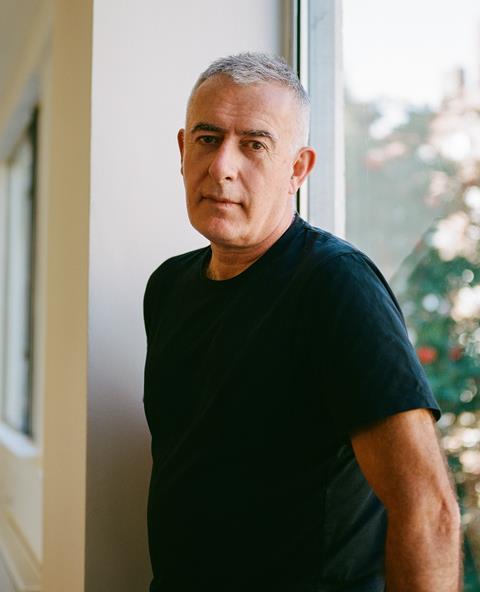
London arguably pioneered this approach in 2012, with a number of the cityŌĆÖs landmarks used as backdrops for demountable venues. One striking example was Horse Guards Parade in Whitehall, which was transformed into a beach volleyball venue in just 36 days.
Such an approach to staging the Games may sound simple, but it requires careful design and planning ŌĆō and specialist contractors to deliver. Olly Watts is joint CEO of ES Global, one of the worldŌĆÖs leading firms specialising in the delivery of temporary staging and venues for rock concerts and major sporting events.
Watts first got involved in this globetrotting world of work as ŌĆ£a fantastic holiday jobŌĆØ, while he was studying for a photography and film degree in 1980s London. ŌĆ£It was great,ŌĆØ he says. ŌĆ£I was working outside, touring around Europe, and it was really well paid.ŌĆØ
It was not long before the holiday job became a career. ŌĆ£It was hard work, 12- to 14-hour days, seven days a week,ŌĆØ he explains. ŌĆ£But I kept on getting offered more and more jobs.
ŌĆ£Like, ŌĆśOh, do you fancy going to Brazil for a month?ŌĆÖ or ŌĆśDo you fancy going to Japan?ŌĆÖ It was really hard to not fall into it.ŌĆØ
ES Global had started out as Edwin Shirley Staging, which built stages for a number of large concerts including Live Aid in 1985. But, when a splinter company was established, backed by financing from the band U2, more than half the staff left to join the new upstart. Watts stayed on and, with many old hands no longer there, he found himself rapidly promoted.
ŌĆ£Having done two summers, I was invited to be in charge of a Rolling Stones tour,ŌĆØ Watts explains. ŌĆ£It was quite an enormous jump up, but I enjoyed it, and so I never looked back.ŌĆØ
Around 13 years ago he had the opportunity to be part of a management buyout with partner and joint CEO Jeff Burke.
From MTV to the Olympics
ŌĆ£Sydney 2000 was the first Games we did,ŌĆØ says Watts. ŌĆ£We did the staging for the opening ceremony. And that was a natural extension of what we were doing in our music business.
ŌĆ£Apart from Beijing in 2008, I think weŌĆÖve done stuff on pretty much every Olympic Games, Commonwealth Games and Asian Games since.
ŌĆ£The biggest amount of work weŌĆÖve done in one go on the Olympics was in Tokyo, where we ended up doing around ┬Ż120m-worth of work. And it has expanded, from staging the opening ceremony elements to venues and other aspects of the Olympics.ŌĆØ
ES Global will be working across 57 venues and structures for the Paris Olympics. Many of these are back-of-house facilities and temporary elements within the athletesŌĆÖ village.
Watts dates the companyŌĆÖs involvement in venue delivery back to the 1994 MTV music awards, when it was tasked with providing a 3,000-capacity theatre in front of the Brandenburg Gate in Berlin.
ŌĆ£It was a live show with a clear wall that you could see the Brandenburg Gate through,ŌĆØ he says. ŌĆ£From that, we kind of stumbled into the venue business.
ŌĆ£We have all sorts of clients and different types of events, but a big part of that is the Olympics, where we do things like whole delivery of shooting venues, golf venues and water polo. The Olympic Games is now very much a central part of our business.
ŌĆ£WeŌĆÖre working on Paris, and weŌĆÖre already starting to bid on the Milan Winter Olympic Games [in 2026],ŌĆØ he explains. ŌĆ£WeŌĆÖve also got our eye on LA 28 [Los Angeles will be the host city for the XXXIV Olympiad].
ŌĆ£In fact, weŌĆÖve got quite strategic now and weŌĆÖve actually set up a company in Australia specifically for the 2032 Brisbane Olympic Games. That sounds a long way off, but the gestation period is significant leading up to that.ŌĆØ
A premier league of architects and engineers
ŌĆ£We have an in-house design department,ŌĆØ he explains. ŌĆ£But we pride ourselves on working with a lot of the best engineers and architects around. WeŌĆÖve worked with everyone from Norman Foster and Zaha Hadid to Richard Rogers and Lifschutz Davidson Sandilands.
ŌĆ£And we work with the premier league of engineers around the world ŌĆō people like Buro Happold, Arup, Mott MacDonald and Momentum. But we always tend to work with them on the basis of our standard equipment, which we designed,ŌĆØ Watts says. ŌĆ£WeŌĆÖve got a truss system and various other types of construction systems that we designed.ŌĆØ
Over the years the company has developed its own well-honed approach to design and delivery, based around a robust kit of parts ŌĆō much of it demountable and standardised components. ŌĆ£What we would do when weŌĆÖre collaborating with these designers is weŌĆÖd start very much from a position that this is how we want it to work.
ŌĆ£So, we donŌĆÖt go and say, ŌĆśThereŌĆÖs a blank piece of paper.ŌĆÖ WeŌĆÖre very much pushing it down a route, and weŌĆÖve developed these relationships with people over the years where we understand each other and work in a very collaborative way.
ŌĆ£But we really enjoy the fact that we work with different sorts of engineers and designers, who all have different opinions ŌĆō we find it very productive. WeŌĆÖre working with some of the best engineering and architectural brains in the world.ŌĆØ
One of ES GlobalŌĆÖs key collaborators in Paris this year is Momentum, the Bath and London-based engineers. ŌĆ£In specifically demountable or relocatable architecture, theyŌĆÖve become real leaders in the field,ŌĆØ Watts says.
Paris climbing wall
Another key collaborator in Paris is London-based WOO Architects, the practice founded in 2014 by Kevin Owens and other members of the team who led the design of the 2012 Olympics on behalf of the London organising committee. ŌĆ£Kevin really is a pre-eminent specialist in the world of sports architecture,ŌĆØ says Watts.
ŌĆ£We have a great relationship with them and weŌĆÖre working with them on Paris and on the [Expo 2025].ŌĆØ
WOO is involved in a number of the Paris 2024 venues, but is working with ES Global primarily on the climbing wall at Le Bourget.
Along with the aquatics centre in Saint-Denis, the Le Bourget climbing venue is the only sports facility to be built specifically for Paris 2024. Five climbing walls will be used during the Games: an indoor wall for warming up and four outdoor walls. The outdoor walls will then be disassembled and used elsewhere while the indoor facilities will become a legacy venue for the Seine-Saint-Denis area, which has a severe shortage of sports facilities (ranked 103rd out of 105 departments in France for such facilities).
ŌĆ£ThatŌĆÖs the most exciting project that weŌĆÖre doing in Paris,ŌĆØ says Watts. ŌĆ£ItŌĆÖs assembled already and, even if I say so myself, itŌĆÖs magnificently iconic.
ŌĆ£It will definitely get the attention. It will be in our brochure for the next 10 years and weŌĆÖre very, very proud of it.
ŌĆ£The actual structure is 100% based on existing pieces of equipment. We refer to it regularly as being the giant Meccano set, where you have a series of standard components.
ŌĆ£ThereŌĆÖs no foundations at all ŌĆō the entirety of the structure is built on the ground, so thereŌĆÖs no waste even in the groundworks or the foundations. Even the weights that hold it down are actual steel plates. When the event is over, they will be returned and have an entirely different use afterwards.ŌĆØ
Rapid delivery
Although ES Global typically gets involved in discussions with the Olympic cities around four years before the event begins, actual construction of its temporary venues takes just a matter of weeks. ŌĆ£In Paris we started the climbing wall structure in early April and it was more or less finished probably two weeks ago,ŌĆØ says Watts. So itŌĆÖs about a six-week construction period.
ŌĆ£But, in terms of planning and design, we were probably contracted six months before that and so weŌĆÖve been working on design and planning prior to that. Our engagement would usually start for something like the Olympics about four years out from the actual event in terms of the first dialogue on preliminary designs.ŌĆØ
Sustainability
Watts has a first-hand appreciation of the transformation that the 2012 Games brought to London. ŌĆ£The Olympics was a vehicle to regenerate a part of east London,ŌĆØ he says.
ŌĆ£It was a complete tip before the Olympics ŌĆō and we can say that without qualification, because our old yard and office was actually on the site of what became the main stadium. So we were right in the middle of it.ŌĆØ
Although London was not the first major sporting event to make use of temporary structures, Watts believes that the UK capital was a pioneer in ŌĆ£really embracing the whole sustainability approachŌĆØ.
He continues: ŌĆ£No permanent venues were built unless they were going to be required in the future. There were a whole load of venues ŌĆō including basketball, water polo, shooting ŌĆō which were conceived from the outset as temporary or relocatable buildings.
ŌĆ£But we were actually feeling that it was just catching up with what we had been doing for a long time,ŌĆØ says Watts. ŌĆ£And so weŌĆÖre hitting a sweet spot in terms of the opportunity because lots of people have cottoned onto the same thing.
One particular Olympics stands out as the event that led to this change: ŌĆ£If you go back to Athens in 2004, itŌĆÖs the classic example of how not to do it. They built I donŌĆÖt know how many venues that were white elephants and that now just sit there with tumbleweed blowing around. The whole thing was just completely and utterly a waste of money and an ecological disaster.ŌĆØ
ES GlobalŌĆÖs sustainability statement:
Our aim is to deliver milestone moments with an approach that champions circularity and sustainability, and breaks new ground in the events and construction industries.
By making the concept of reuse a central feature of all our activities and projects, we continually repurpose equipment, design out waste and design in efficiency.
Maintaining the integrity and durability of our equipment on an ongoing basis means we can deliver technically and creatively exceptional solutions on time, time after time. It follows that every ES Global frame, truss and coupler has a story to tell, from supporting a live band to providing a great view for spectators at an Olympic event to accommodating an emergency health facility.
Beyond reusability, we are committed to making continuous improvements to the sustainability performance at our sites by optimising our resources and expertise. More broadly, ES Global focuses on climate action, fostering an inclusive and supportive workplace and making a positive impact in the communities we work in.
Watts sees the approach that ES Global has long pioneered as a gamechanger for countries and cities that may in the past have felt they could not host big sporting events like the Olympics because they had become so expensive. Now there is scope to get better value for money. ŌĆ£Our equipment is reusable in multiple different sorts of configurations. And so that underpins how weŌĆÖre achieving low carbon and just inherent reusability. That is basically what the projects that we deliver are based on.ŌĆØ
ŌĆ£Everyone assumes that youŌĆÖve got to spend ┬Ż10bn on new venues,ŌĆØ he says. ŌĆ£When you get rid of that mindset, it changes the possibility and the opportunity for different places that couldnŌĆÖt necessarily afford to put on the Games before.ŌĆØ
In an era when starchitects are finally taking a back seat to the need for reuse and sustainability, new approaches to venue design are really coming to the fore. Paris may not be doing anything entirely new but, with its adoption of ambitious targets for temporary and reusable venues, it is taking the process to another level and seeking to set standards for all the Olympic Games of the future.
What ES Global is working on for Paris 2024
Number of locations: 57 sites, combining competition and non-competition sites (Olympic villages, training sites, international broadcast centre etc).
Number of systems: 71 complex structures in total, including:
- Le Bourget: the climbing megastructure and video screen support, plus two broadcast towers and the warm-up wall.
- Stade de France: Presidential box, competition control box, finishing line camera platform, mixed zone and press positions.
- Olympic Village: Main entry and merchandise store (decks and tents).
- Elancourt (mountain bike): Press tribune.
- Velodrome: JudgesŌĆÖ platform, broadcast platform and commentary position.
- Lille: three super bridges carrying cables and water pipes
- Modern Pentathlon: Laser target structure.
- Trocad├®ro (for the opening ceremony): finishing line camera platform and public access stairs.
- 28 screen support structures at various venues.
- Mixed zones at various venues.





















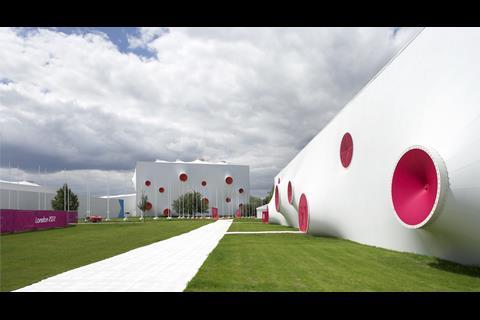

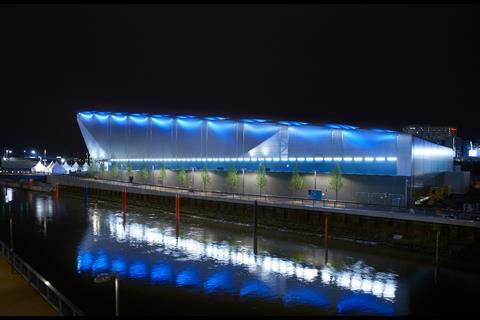
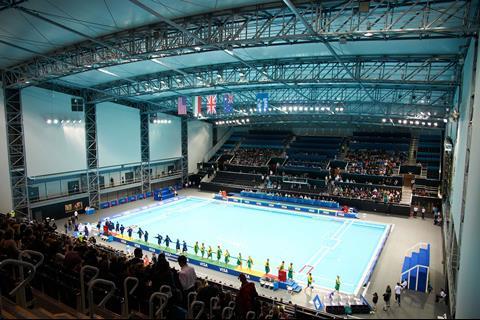
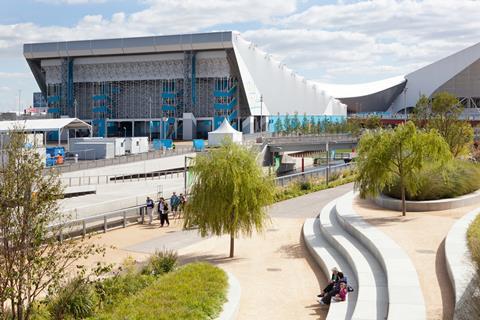
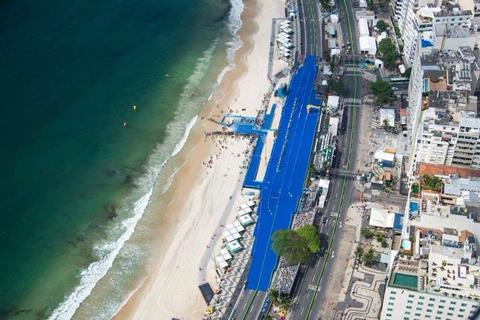
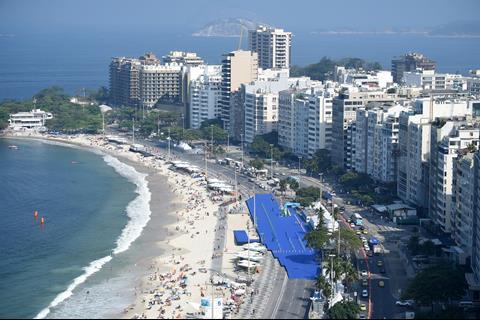
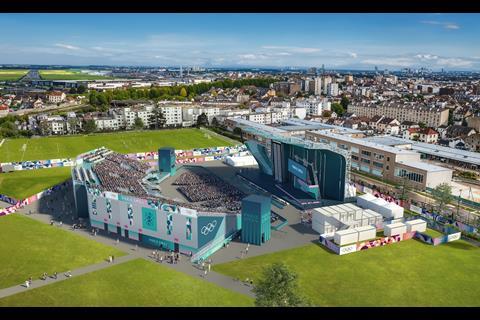
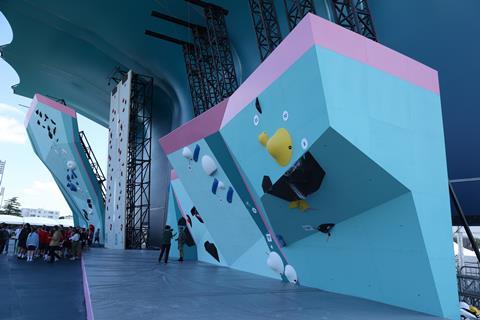
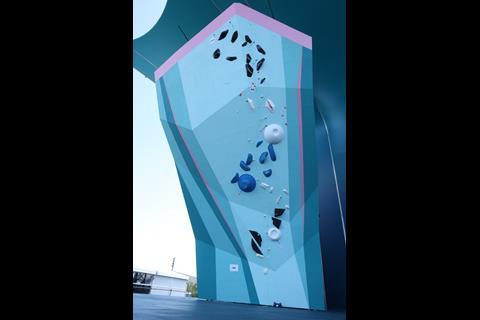
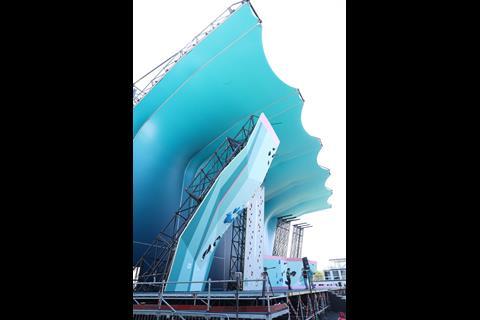






No comments yet